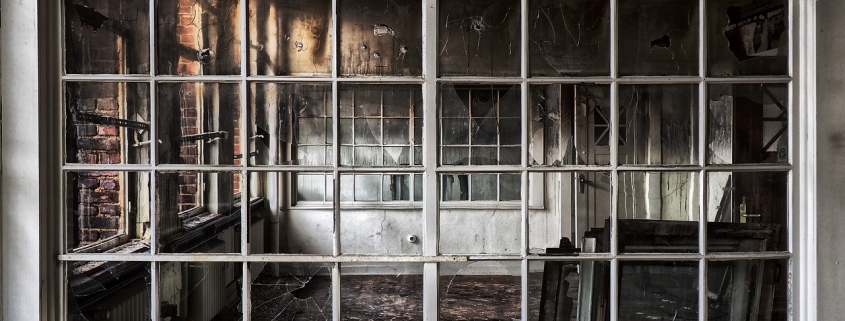Professional Fire Restoration And Repair
Professional fire restoration is necessary for any home or commercial facility that has suffered a fire, regardless of the size of that fire or the degree of damage. Restoring a structure after a fire ensures that the air is clean and the environment is safe from pollution and also protects that structure from mould growth in the future.
Fire reset refers to the cleaning and subsequent complete restoration of a fire-damaged structure to its original condition so that the building is structurally sound and free of hazardous chemicals and fire residues. Drying of a structure after the use of refractory chemicals and water used to extinguish a flame, and monitoring of this structure for possible mould, mildew, and other such risks are also part of this restoration work.
If your home or commercial building has gone through a fire, it is good to understand the importance of professional fire damage recovery service. You can then make sure that your structure is safe to occupy and protected from dangerous and unhealthy mould growth and other such contaminants.
What is needed to restore a structure after a fire
Restoring a structure after a fire involves an inclusive plan for cleaning and rebuilding. Fire recovery services usually involve many of the following steps:
- Recoverable items are removed from the structure and placed in an area where they can be completely dried. Inexpensive items such as furniture and electronics are disposed of properly.
- Parts of the damaged structure beyond repair are removed; these items may include drywall, ceiling and floor, carpets, plumbing fixtures and the like.
- Once all such items have been cleared from a fire-damaged area, that part of another house or building is usually contained or separated in some way. The plastic cover can be hung around the space, for example, to keep the spread of soot, ash, chemicals and other debris in nearby areas of the structure.
- A fire rehabilitation expert will usually take measurements of humidity or humidity in the air. These measurements tell him or her if the area has dried properly after their restoration work has been completed.
- Special vacuums remove all traces of smoke, soot, ash, refractory chemicals and excess water. Additional cleaning with speciality detergents is often needed to wash away soot and smoke stains, fire-fighting chemicals and other such materials.
- Fragrance removers are applied to various areas to remove the smell of smoke, chemicals and burnt wood.
- High-energy dehumidifiers and other such devices remove water and moisture from all surfaces of the affected area, to remove the water residue used to extinguish the flame.
- Once humidity levels are normal, the restoration expert will work with construction contractors to rebuild the structure; for example, he or she will install new wall pillars, floor tiles, floor tiles, floor tiles, floor tiles, carpets and other such materials as needed.
- The fire rehabilitation expert will also work with the property owner to decide on replacement materials for items such as cupboards or furniture, as needed.
- Contractors will also paint walls, clean windows and perform other such finishing work.
- Once the recoverable items are dry, they also receive a thorough and deep cleaning.
Why restoring a structure is not an easy task
A homeowner or business owner should never undertake to try a fire cleaning. An important consideration is that the chemicals used to suppress fires are very dangerous to the sinuses, eyes, and skin, and standard household detergents are ineffective at removing those chemicals. Inefficient cleaning can cause problems in you breathing in those chemicals for many days or weeks after a fire.
Soot, ash and other fire residues are also very hard if not impossible to remove with standard household vacuum cleaners. It is also easy to spread these particles to other areas of a structure without realizing it; ash and soot can stick to your shoes and clothes so that they can be traced all over your home or office! This residue can also be made into the air long after your cleaning efforts; then you can breathe in that disturbing waste and potentially suffer from serious health problems.
It is also essential that a fire damage restoration service expert ensures that your home or other structure is completely dry after a fire and even monitors your home for possible mould growth. Note that building materials such as drywall and wood studs absorb water easily and quickly; if not dried properly, this moisture can soften that wood and lead to mould, mildew and other such disturbing contaminants. For all these reasons, leave this work to the pros!
Understanding structural damage after a fire
After a fire, damage to some structural materials is often apparent. Drywall is extremely easy to look for in a fire, such as areas of carpets and other particularly combustible materials in your home or office. Fiery fires can leave holes in walls, floors and ceilings so that these materials need complete replacement.
However, a structure can often suffer major imperceptible or visible damage from a property owner. For example, PVC pipes can release dangerous dioxins into the air when melted. Worn or softened pipes can also lead to water leaks, and leaking pipes usually lead to mould growth and damage to wood beams, floor coverings and the like.
After absorbing water used to extinguish a flame, structural materials and other materials around your home or office may have hidden water stains, or retain water in areas that are not easily visible. For example, carpet filling easily absorbs water that leads to mould under the carpet. This water and moisture can also soften the floor of a structure. A fire damage repair expert will know where and how to examine fire-affected building materials so that your home or commercial building is structurally sound and stable.
Restoration is necessary even after a small fire
Do not assume that your home or office must suffer a significant, catastrophic fire to seek the services of a restoration expert. Even a small fire in the oven or uncontrolled flame in a fireplace can cause great damage to a home! Notice why you want to call a restoration expert no matter the size of a fire in your home or office:
- Even small amounts of excess water sucked from carpets or tiles can lead to mould and mildew. Once these contaminants develop, they grow and spread rapidly, leading to dangerous mould spores in the home as well as unpleasant odours.
- Chemicals in household fire extinguishers can stay in the air long after a flame is extinguished; without proper cleansing, you can continue to breathe in those disturbing chemicals for days and even weeks!
- Even a small fire, as well as a small amount of fire-fighting chemicals and water used to extinguish the flame, can damage dry tiles, ceiling tiles, floor tiles and the like. Without proper cleaning and repairs, these materials continue to degrade over time, making your home structurally unhealthy.
- Small fires leave behind annoying odours, but homeowners can “blind their noses” so as not to notice these odours. However, these odours can cause headaches and other health concerns and be a nuisance to pets. Smoke odours are also the result of residual soot, ash and other debris that you can breathe or spread to other areas of your home or office. Proper cleaning and odour neutralizers will eliminate those odours.
Mould Repair and Fire Restoration Services
Repairing mould after a fire may involve consistently controlling the humidity levels of the structure, as well as examining the area for mould growth. A mould restoration or rehabilitation expert can also warn a property owner of what needs to be done to prevent mould from developing after a fire, such as providing a properly ventilated structure and examining walls and ceilings for traces of mould growth.
If mould develops after a fire, call a mould cleaning expert. Mould spores are very dangerous to your health and can spread quickly from one area of a structure to another. A mould cleaner can notice if mould cleaning is an option, or if the affected parts of your structure need to be cut and replaced completely.
FAQs about Fire Restoration
Q: Why should a homeowner leave during fire repair services?
A: A homeowner or property owner may need to leave the premises during restoration services, as cleaning work often causes soot, ash, and chemicals to become airborne and settle elsewhere in a home or office. The structure may be unsafe until the cleaning is completed.
Q: How long does it take to repair or restore a fire?
A: Restoring a fire is not usually a quick process. A restoration expert must ensure that every part of a structure is clean and structurally sound. The amount of water used to extinguish a fire will also affect the time required to remove and clean it.



